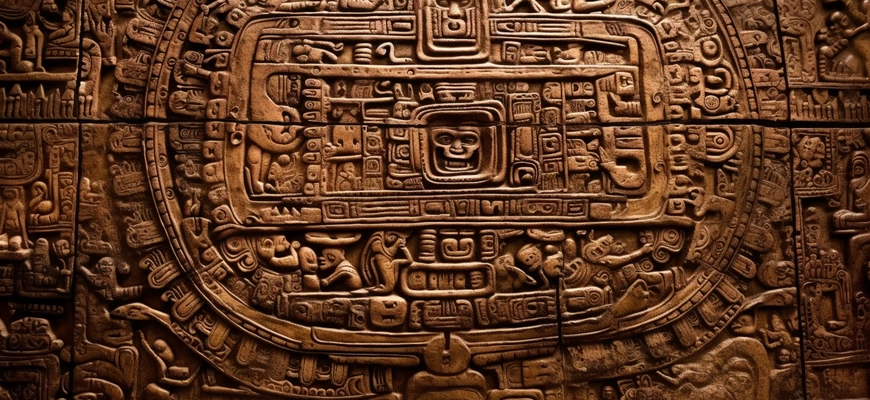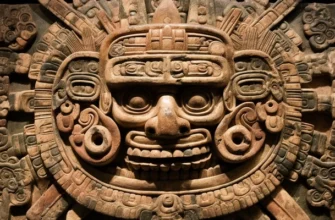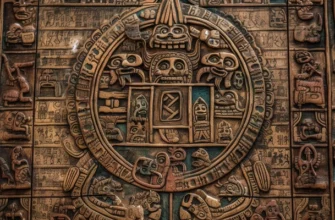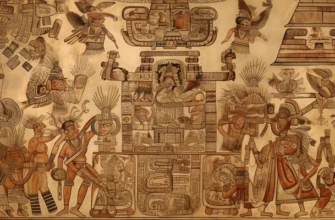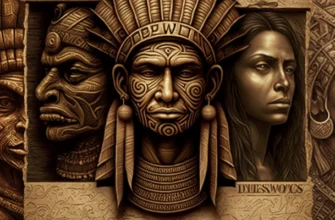Aztec writing was a complex system that used hieroglyphics and symbols. It was of great importance in the daily life and culture of the Aztecs. The legacy of this writing system is important to the modern world, and its research and preservation have become the focus of many scholars and cultural critics.
- History of the development of writing in the Aztec civilization
- Symbols and hieroglyphs in Aztec writing
- The use of writing in Aztec daily life
- The Aztec writing heritage and its importance in the modern world
- Preservation and research of the Aztec script
- The use of the Aztec script in contemporary art and culture
History of the development of writing in the Aztec civilization
The Aztec civilization existed in Mexico from the fourteenth to the sixteenth centuries. Before the colonization by Spain, the Aztecs had a complex writing system that included hieroglyphs, graphic symbols, and signs.
The Aztec writing system was based on a system called Nahuatl. It was used to record history, cultural traditions, and religious traditions. The Aztecs also used writing to support administrative functions and trade.
The Aztec writing system included hieroglyphs, which were graphic symbols that represented various ideas and concepts. In particular, symbols could stand for objects, actions, or concepts such as time or death. The Aztecs also used a system of signs to represent numbers.
One of the most famous documents that reflects Aztec writing is the Codex Mendocino, which is written in the Nahuatl language and contains illustrations and descriptions of religious and cultural practices.
After colonization by Spain, the Aztec script gradually disappeared as most documents were destroyed. However, some Nahuatl texts were preserved and are being studied by researchers today.
Symbols and hieroglyphs in Aztec writing
The Aztec writing system used various symbols and hieroglyphics to represent different ideas, concepts, and objects. Some of the most well-known symbols and hieroglyphs in the Aztec language are described below:
Quichpahua is a symbol that represents a stone on which sacrifices were offered to the gods.
The calpulli is a symbol that represents a group of people coming together to work and interact.
Ittaka is a symbol that represents the earth and is used to denote possessions.
Tonalamatl is a hieroglyph that represents a calendar and is used to indicate dates.
Chapoalteca is a symbol that represents the place where the temple and palace are located, as well as the city as a whole.
The flower of life is a symbol that represents the cosmos and the universe, and is also used to denote various religious and cultural concepts.
The Iztlakatl is a hieroglyph that represents a craftsman or artisan, used to denote various artisanal types of labor.
These symbols and hieroglyphs were used in the Aztec writing system to record history, cultural traditions, religious traditions, administrative documents, and trade agreements.
The use of writing in Aztec daily life
Writing played an important role in the daily life of the Aztecs. It was used for communication, information storage, administrative needs, and religious purposes.
One of the most common uses of writing in Aztec daily life was to record events, trade transactions, taxes, and other administrative data. For example, officials used writing to compile inventory lists, income and expense reports, and to keep records of holdings and land dispositions.
In addition, writing was used to communicate between different Aztec tribes and groups. For example, most of the written exchange took place through letters sent by rapid links, which helped to develop trade, culture, and political relations between different regions and tribes.
The written record also played an important role in Aztec religious life. Religious priests used writing to preserve religious texts and rituals, as well as to record the rites and religious duties that were performed.
Thus, writing played an important role in Aztec daily life, helping to preserve, transmit, and develop knowledge, communicate, and conduct administrative, religious, and commercial business transactions.
The Aztec writing heritage and its importance in the modern world
The Aztec writing system, like that of many other civilizations, was a key element of their culture and heritage. The Aztecs used a special hieroglyphic writing system that allowed them to record information about their history, culture, religion, science, and technology.
Unfortunately, however, many of these written documents were destroyed during the conquest and colonization of Mexico by other countries, and only a few fragments of these texts survive today. Therefore, we do not have a complete understanding of Aztec culture and history.
However, even the limited knowledge we have about the Aztecs is of great importance to the modern world. The study of Aztec writing and culture allows us to better understand the development of civilization as a whole and to understand how different cultures interacted with each other. In addition, the Aztecs were known for their achievements in mathematics, astronomy, and engineering, which can be useful for modern research in these fields.
Also, the study of Aztec writing and culture can help to preserve cultural diversity and maintain cultural heritage. The preservation and study of Aztec writing and culture is an important task for the preservation of the world’s cultural heritage and the development of global cultural awareness.
Preservation and research of the Aztec script
Preserving and researching the Aztec script is an important task for preserving the historical and cultural heritage of this ancient civilization. Here are some possible ways to preserve and research Aztec writing:
Restoration and conservation of existing Aztec documents: This means preserving existing Aztec documents by restoring, conserving, and storing them in special archives. This requires specialized experts in the preservation and restoration of old documents.
Study of other sources: Since most Aztec documents have been destroyed, scholars can research other sources that may contain information about the Aztecs, such as other documents, found artifacts, surviving manuscripts, etc.
Reconstruction of signs and hieroglyphs: Many of the Aztec hieroglyphs have been lost, so it is possible to reconstruct these signs by comparing them to other related cultures, such as the Maya, who used similar writing systems.
Use of the latest technologies: Modern technologies such as scanning, 3D modeling, and other digital methods can help restore Aztec documents and preserve them in a digital format that ensures their preservation and accessibility for further research.
It is important to note that preserving and researching Aztec writing not only preserves historical and cultural heritage, but can also help reveal more about the life, myths, religion, technology, and other aspects of Aztec civilization.
One example of the use of the Aztec script is the discovery of the Aztec Calendar Hieroglyphics, which allowed researchers to understand how the Aztecs determined time. Also, the study of Aztec technologies and arts can help develop new innovative solutions.
In addition, preserving the Aztec script can help to restore the history and culture of a people who no longer exist. This can be especially important for local communities who may feel a strong connection to the Aztecs as their ancestors.
Thus, preserving and researching the Aztec script is an important task not only to preserve the historical and cultural heritage of the Aztecs, but also to enrich our understanding of the world and develop new innovations.
The use of the Aztec script in contemporary art and culture
The Aztec script, like many other elements of Aztec culture, has found its place in contemporary art and culture. It is used both to create contemporary works of art and to decipher and reconstruct historical Aztec texts.
For example, Mexican artist Manuel Acari uses Aztec symbols and hieroglyphics in his art installations to create complex compositions that reflect the cultural heritage of Mesoamerica and other ancient civilizations.
Aztec symbols and hieroglyphs are also used in clothing design, jewelry, tattoos, and other items. They have become a popular fashion element, especially in Mexico and other Latin American countries.
Nowadays, thanks to the development of technology, new methods of restoring and researching Aztec writing have become possible. In particular, virtual reality tools allow creating interactive visualizations of Aztec texts and hieroglyphs, which contributes to a greater understanding of these texts and allows researchers to discover new aspects of Aztec culture and history.
Thus, the Aztec script remains an important element of modern culture and art, which is used to embody the traditions and heritage of the Aztecs in the modern world.
